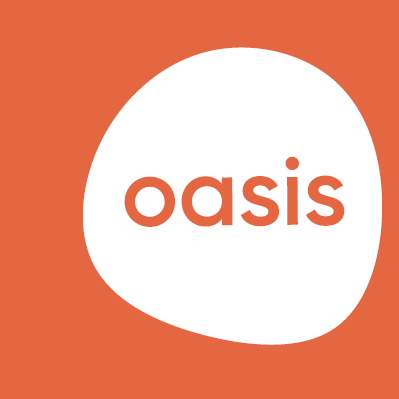Belonging at work – ‘People can be themselves’
I’ve been thinking a lot lately about what makes a welcoming, healthy working environment where people can flourish and be fulfilled. A fellow EDI consultant commented recently that people who encourage colleagues to ‘bring their whole selves to work’ must lack experience of being marginalised, or they would understand the myriad reasons for people feeling unable to show up for work as their authentic selves. Their comment stayed with me – it was a reminder that not everyone has the luxury of demanding a welcoming and psychologically safe working environment and voting with their feet if this is not forthcoming. Furthermore, not everyone wants to bring their whole selves to work. It’s true that we show different aspects of ourselves in different contexts, and that this is not necessarily a bad thing. However, after examining both sides of the ‘whole person’ debate, I drew the following conclusions:
-It is first and foremost the responsibility of leaders within an organisation to create an environment where people feel welcome, seen and valued. And it is everyone’s job to contribute to and maintain this environment.
-What I’d like to see as a non-negotiable working condition is an environment where people can choose to show up as themselves in the workplace without fearing for their psychological, physical or financial safety.
-It is a privilege to be able to demand a working environment where attention is paid to concepts such as ‘belonging’ and ‘psychological safety’. Real world injustices (and, arguably, the inequalities baked into a hyper-capitalist society) mean that, in spite of our best intentions, some people may not feel safe to bring their whole selves to work. And yet, I believe that this whole person approach is something that we need to aim for and work towards. I spell out why below.
Let’s consider what it means for a person to feel welcomed, seen and valued at work. Many of us spend a huge proportion of our lives in the workplace and, increasingly, want our work to offer a sense of purpose, achievement, fulfilment and security. Anyone who has been miserable in a job because of poor working relationships, a lack of alignment with values and ethics, a lack of care and attention to their wellbeing or a general sense of ‘not belonging here’, no doubt understands the impact of showing up to such an environment day after day. And perhaps we can also think back to an experience of moving from a role or team that wasn’t a great fit to an environment that felt right – the relief, the rapport and the improvement to both our emotional wellbeing and our work. The issue of belonging and being ourselves is relevant to everyone in the world of work. And for some people, there are extra considerations to take into account when choosing a new workplace to apply to –
‘Can I talk about my spouse here?’
‘Will there be negative consequences if I ask for the accommodations I need?’
‘Will I be penalised if I take too much time off?’
‘Do they have the bathroom and changing facilities I need?’
‘Will I be the only person like me in this place?’
‘Will they ask me to change my appearance because how I look is deemed unprofessional?’
‘Am I the diversity hire?’
These questions may speak to HR issues around compliance to the Equality Act and other anti-discriminatory law and policy, but addressing them goes beyond the basics. People with minoritised identities and experiences that carry stigma, judgement and misunderstanding are often very vigilant about looking for signs of whether our environment is safe. In fact, all humans are wired to be highly attuned to signs of safety, welcome and belonging or lack thereof – we’ve evolved to be preoccupied with belonging, because it historically meant survival (and still does, in some situations). For those of us who face additional barriers to belonging because we are in a minority, the question ‘do I belong here?’ carries extra weight. Fostering a culture where there are signals to indicate welcoming and valuing under-represented groups can be really helpful and offer a sense of safety, though it is crucial that the words and signals are backed up with action.
It’s true that not every person can and should fit into any given workplace – I can think of endless examples of industries and workplaces where the working hours, pace, vision, values, culture and so on would be my worst nightmare (and, crucially, someone else’s ideal job). Rather than assuming that organisations can and should perform miracles in order to ensure that anyone, regardless of goals, temperament, skills, communication style etc. can access a given role and feel that it fits them, I’m advocating for developing a perspective that takes into account both individual and structural issues. When things don’t work out with an employee, it can be easier to consider this a ‘lack of cultural fit’, and to therefore locate the problem within the individual, rather than within the organisation. ‘Cultural fit’ is an issue to be assessed critically, in order to ensure that the best people for the job are taken on, that the organisation benefits from a wide range of skills and perspectives, and that everyone in a team can feel welcomed and valued. I have come across many examples of teams where there is an over-representation of specific traits. As an outsider coming into an environment where – for example - the majority of a team is male, white, middle aged, heterosexual, married with children, a football fan, outcome orientated and prefers direct communication, I have been acutely aware of what it feels like to be ‘different’, and of the missed opportunity for diverse perspectives, approaches and communication styles.
A related trap is the extension of goodwill into assumptions about others’ experiences – this relates to the current discourse around a shift of focus from intention to impact. When a person or group works hard to ensure that they are friendly, polite, welcoming and committed to treating people equally, the idea that some people’s experience may not match the intent can be hard to swallow. As such, it’s often assumed that ‘of course people can be themselves in this place, we’d never do anything to make them feel excluded!’ And yet, as painful as a challenge to our beliefs and assumptions might be, the best ways to find out if people feel welcome, seen and valued are firstly to ask them, and secondly, to consult and analyse data around recruitment and retention, reported staff satisfaction levels and demographics. Often, our ‘blind spots’ around barriers to belonging are a result of a lack of personal (and professional) experience of a specific issue – experiences that we can’t imagine or relate to until we encounter and learn about them are common to all of us. Listening to individuals, who are the experts in their own lives, and consulting resources and professionals offering guidance are key here.
In environments where people feel they can be themselves, there are clear benefits to the individual’s wellbeing, which tend to have a knock-on effect on their work. I believe that the wellbeing benefits should be enough in and of themselves, but it seems worth pointing out that both employees and organisations stand to benefit from an inclusive and welcoming working environment. It is well established that rapport and trust building within teams helps them to work well together and deliver better outcomes. And understanding each other can smooth over avoidable issues and conflicts, making life and work easier for all concerned. Two positive examples come to mind from my own experience of working within teams. I spent most of my career to date unaware that I have ADHD and could ask for reasonable adjustments, but I’ve always known that I struggle with transitioning between tasks. When I moved into a management role, I found it really challenging when colleagues would appear at my desk and ask a question. There was potential for conflict, as I could find myself being irritated and distracted when a non-urgent question pulled my focus away from a time sensitive report or a task where I was enjoying being in a ‘flow’ state. But, given the culture of the organisation, it was easy to speak to the team about the issue and negotiate a solution that worked for all of us. I wasn’t too concerned that ‘admitting’ a challenge and negotiating for an alternative way of working would lead to judgement about my skills as a leader. And furthermore, this influenced a practice of team members outlining what they needed from colleagues in order to work to their full potential. It wasn’t always straightforward, as there can be competing needs at times, but in this case, there was enough trust, rapport and ‘buy-in’ to encourage people to speak up for their needs in service of both themselves and their work. The second example is the use of ‘checking in’ at the start of meetings. I can think of a number of situations where a team I was part of was going through a difficult process or transition, with high potential for worries, resentments and conflicts to be brought into the meeting room. The simple act of asking everyone to notice and share what’s going on for them serves to remind everyone of their common humanity, to gain a little insight into each other’s thoughts and feelings, and to foster a sense of being part of a group. I’ve felt the impact of checking in at times when I’ve been harbouring frustrations and felt tempted to dehumanise someone I disagree with, only to shift my feelings and mindsets as a result of hearing about their experience and remembering that they aren’t so different from me after all.
I believe that the shift towards ‘bringing your whole self to work’ and a demand for belonging is linked to a wider cultural change. What may once have been seen as unprofessional, outrageous or perhaps just a little unusual may no longer be noteworthy in the slightest. For example, employees with visible tattoos – I’m aware that there are specific environments in which there are rules and restrictions, but on the whole, I have seen a shift in attitude and some relaxation of policies over the course of my working life. Equally, what is considered appropriate to share with colleagues may vary among different environments and cultures, but I have perceived a shift here too. As particular identities, experiences and life events become less stigmatised, people feel permission to be more open about them, and may also feel that their employers need to know about their mental health difficulties, caring responsibilities, losses, celebrations and cultural events. It can be challenging to make space for the varied, and potentially conflicting, needs and experiences of everyone within a group, but I see the move from very clearly delineated personas for work and personal lives towards an experience that acknowledges our humanity in all its diverse and messy glory as a positive one that’s absolutely worth the effort.
Mo Ford
Learn more about the Oasis Raw Network. Contact us for more information on how we can help embed employee wellbeing through our oasis counselling services.


